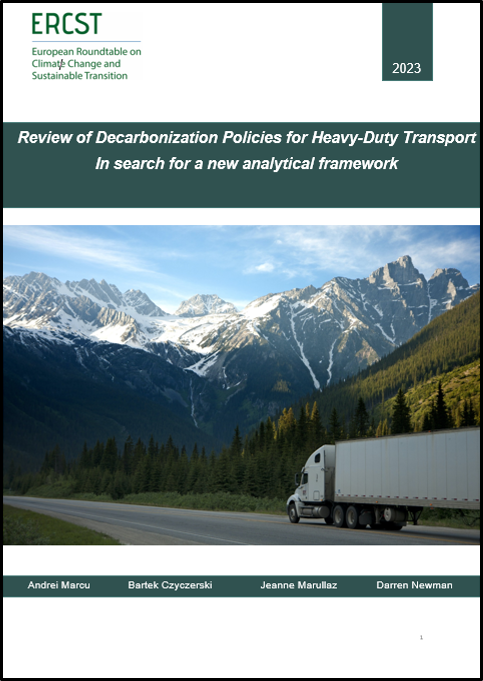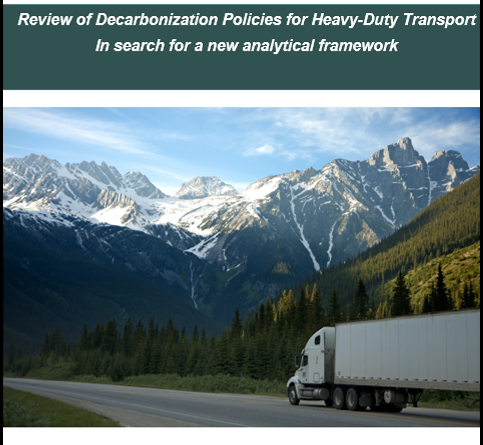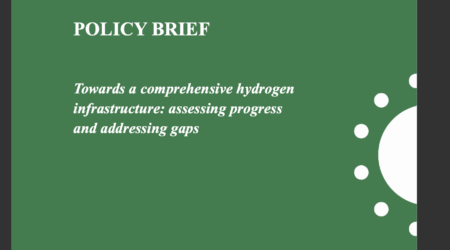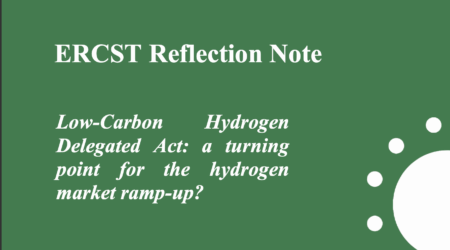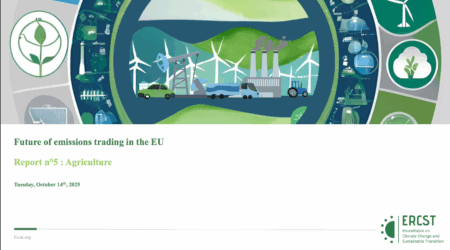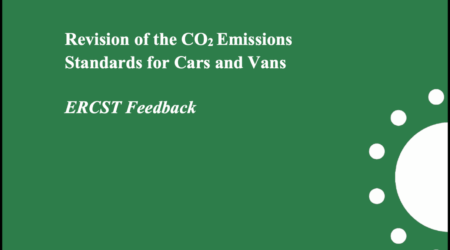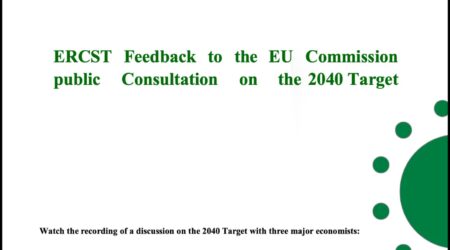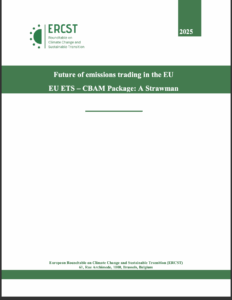Review of Decarbonization Policies for Heavy-Duty Transport: In search for a new analytical framework
Author(s): Andrei Marcu, Bartek Czyczerski, Jeanne Marullaz, Darren Newman
May 11, 2023
The ERCST project strongly supports the EU’s ambition to transition to a net zero energy system and vehicle sector by 2050. Zero emission vehicles are seen as the main technology destination to support this ambition. The project’s aim is to consider the proposed legislative pathways from today to reach this ambition. It seeks to assess the robustness of the current policies, the impacts on stakeholders, the economic, environmental, and social consequences of the policy and to explore alternative or additional pathways to efficiently reach the target.
The first report sets the ERCST analytical framework and addresses the following question: what influences the determination of pathways for decarbonization of heavy-duty transport? It identifies the assumptions that were used in defining the current decarbonisation solutions for HDVs, then it outlines changes in the economic, political, and social environment and, finally, determines new desired outcomes that need to be considered under current circumstances.
The next report will analyze the current decarbonization solutions for heavy duty road transport considering the new circumstances and recommendations for new pathways complementary and/or alternative to the existing ones.
Key Takeaways:
- Heavy-duty vehicles (HDVs) are essential for the European economy and transportation of goods and people.
- The heavy-duty sector is responsible for over 6% of total EU GHG emissions and it should play its role in fighting the climate change.
- The HDV market is diverse, with various vehicle types and models, depending on their use, size, and market structure. Purchase costs are also significantly higher than those for LDVs.
- Access to charging infrastructure is challenging for HDVs due their diversity, long-distance travel, and high energy consumption.
- Formulating decarbonization policies for HDVs must consider their unique characteristics and distinctions from passenger cars.
- The main policy driver for the decarbonization of heavy-duty transport is the EU’s commitment to reduce greenhouse gas (GHG) emissions, and air and noise pollution.
- The policy direction for decarbonization is towards renewables and electrification.
- The issue under consideration needs to be articulated as determining the pathways that will ensure a sustainable transition, minimizing social and economic impacts.
- Past economic considerations supported the policy choices regarding decarbonization of HDV transport but may have underestimated potential risks, such as the availability of raw materials necessary for technology development, and technological advancement of competitors in the electric vehicle sector.
- HDV transport has significant societal context and implications, affecting the access to and affordability of goods and services for citizens, and many jobs.
- Unprecedented developments such as the pandemic, geopolitical changes, and climate change have tested the assumptions driving decarbonization of HDV transport.
- External competition, particularly from China and the USA, is challenging the European path to net-zero due to the acceleration of decarbonization policies in the USA and China’s leadership in battery production.
- The volatile geopolitical situation brought on by Russia’s war on Ukraine has had an impact on some of the economic assumptions.
- Regulation, rather than the market, has been the driving force of change in the EU for decarbonisation policies, overshadowing market-based approaches like the EU ETS.
- Enabling economic and political conditions, including the availability of charging and alternative fuel infrastructure, renewable electricity and hydrogen, and raw materials necessary to produce batteries, are necessary for ensuring effective transformation and continuous welfare of society.
- Policymaking should focus on resilience, adaptability, security of supply, and ensuring options, while the market and innovation should be in the lead and ahead of regulation to manage and respond to risks.
- Economic efficiency and competitiveness should be reconsidered in assessment of various options, including the impact on consumer prices, jobs, and economic welfare.
- Effective and credible measurement of emission reduction, climate impact, and energy efficiency is required, considering the incomplete picture of the ‘tailpipe approach’ to measuring emission reduction and the need for other frameworks.
